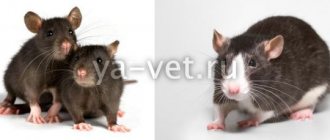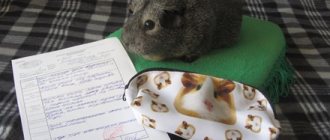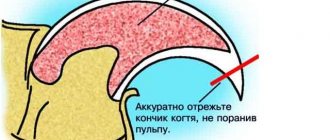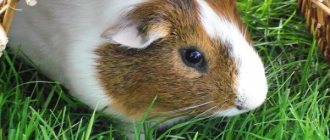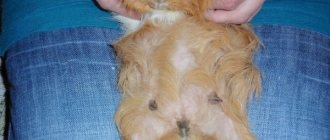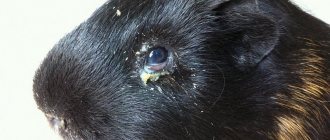Chinchillas are cute small animals that can be kept at home. But the cute little animals are distinguished by their distrustful behavior and wayward character.
In order for chinchillas to become loyal, affectionate pets, in addition to proper care, you also need to know the rules of how to train a chinchilla. Following these rules, establishing contact with a chinchilla will not be difficult.
How to start getting to know an animal
Training chinchillas is a delicate matter and requires patience, as well as pre-established contact with the animal.
Newly-made owners often make a mistake: they immediately start petting, hugging the pet, and in a word, violating the animal’s boundaries. The fact is that such behavior can cause aggression in a chinchilla, which manifests itself either in bites or in releasing a small stream of urine at its “offender.” She doesn’t know the person yet, the new environment is stressful for her, so during the adaptation period she should wait a little with tactile contacts.
The first few days after the chinchilla appears in the house, it needs to be given time to get used to the new house and visually remember its new family members. At this time, it is important not to make loud and sharp sounds, otherwise the process of how to accustom a chinchilla to your hands will be very delayed.
It’s best to start getting acquainted with a chinchilla with the voice: you need to talk to the animal, so it will quickly get used to the owner’s voice and be able to quickly adapt to the new environment. And only after an adaptation period (it can take up to 7 days), you can begin to accustom the chinchilla to your hands.
How to train a chinchilla to be handled at a young age
It is much easier to train a small chinchilla than an adult. This is due to the fact that small animals, although scared at first, are more flexible and pliable.
The algorithm for how to train a chinchilla will be as follows:
- You need to approach the cage with your pet slowly, without sudden movements or loud sounds. When approaching the cage, you must definitely talk to your pet, then he will get used to the voice and will be willing to make tactile contact in the future.
- As soon as the chinchilla stops hiding in the house at the sight of the owner, you can move on to the next stage of training - opening the cage door. You also need to open the cage smoothly and gently.
- When the chinchilla has already gotten used to the algorithm of actions (the owner approaches the cage and opens the door), you can start giving it treats from your hands. Your favorite treat should be placed on an open, outstretched palm; first you need to establish trusting contact so that the chinchilla takes the treat itself. This usually takes 1 to 2 weeks.
- Only after two weeks of daily training with treats, you can start trying to pick up your pet, or give treats directly to his paws. It is important not to grab the chinchilla by the scruff of the neck; they associate such an action with a snake attack.
- When the pet gets used to the hands, it will be able to calmly climb onto the owner’s shoulders on its own, sit in the arms, and become a real companion.
Chinchilla drinks a lot of water
This is at the same time suspicious, but some problems and illnesses are not always hidden behind this. This is usually due to the hot season or changes in temperature in your room.
Reasons why a lot of people drink a lot of water:
- High temperature in the room, usually drinking plenty of fluids starts at +23
- The cage is placed in direct sunlight
- Air humidity has changed dramatically
- The female is pregnant and it is normal for her to consume a lot of water.
- The animal is sick, but then there must be other symptoms and she will become lethargic.
Training adult chinchillas
Sometimes a chinchilla will come to its owners when it is already an adult. Methods for training a chinchilla in this case will depend on several factors:
- Was the pet kept in good conditions before?
- Has the pet had contact with people?
- Was the animal scared?
It is easier to accustom a chinchilla to being handled if it has already had interaction with a person before. But, even if the chinchilla is “wild”, it can be trained, it will just take more time and patience. If the owner correctly uses recommendations on how to accustom a chinchilla to handling, then the animal, even the wildest one, will willingly make contact.
The algorithm for dealing with an adult will be as follows:
- The first days after moving to a new place, the pet should be left alone. He will get used to new smells and the external environment. You definitely need to put a house in a cage for your chinchilla so that she can hide and feel protected.
- Every evening, the new owner needs to sit in front of the cage and start talking to the pet. The voice should be gentle and quiet. If during such conversations the animal does not hide in the house, then you can move on to the next stage, how to accustom a chinchilla to your hands.
- After the animal gets used to the voice, you can start feeding it by hand. During feeding, you also need to talk to him affectionately. After just a few days, the chinchilla will willingly run up to its owner.
- When the chinchilla itself begins to take treats from your hands, you can already try to take the animal in your arms and put it on your shoulders: it will be interested in further acquaintance with the owner.
Training an adult chinchilla takes two to four weeks, provided it is completely healthy. The fact is that if a rodent comes to a new owner with some kind of disease, then, of course, it will need to be treated. Sometimes treatment involves injections, IVs and other unpleasant procedures that do not inspire confidence on the part of the rodent. In such cases, training a chinchilla will not be difficult, but more time-consuming.
Reasons for refusing to eat
There can be various reasons for a chinchilla not eating well. Some of them are easier to eliminate, some require long-term treatment. An attentive livestock breeder must be able to notice any deviation in the animal’s behavior, because this is the only way to quickly identify “problems” in the pet’s health and help him in treatment.
So, possible problems due to which the fluffy may refuse to feed and drink may be the following.
Catarrh
This problem is inflammation of the gastrointestinal tract. Inflammation can be either a cold or have an acidic or alkaline form.
This problem is caused by loose stools, lethargy and refusal to eat. The cold may be accompanied by sneezing and constant scratching of the nose.
Such inflammation somewhat complicates the process of digesting food - if only because food entering the esophagus causes pain. Sometimes the stomach does not digest food at all. This causes the chinchilla to refuse food and water. Refusal of food makes the pet sleep more often, in a way “saving energy” of the body. As a result, the fluffy becomes lethargic.
How to fix such a problem? It is imperative to consult a veterinarian to determine the nature of the individual’s disease. The owner will not be able to verify such a determination on his own. The acidic, alkaline and cold forms are treated differently, different drugs are prescribed, and the effects of drugs occur on different organs and systems.
Each form requires a strict diet. Any food other than fresh hay and clean water is excluded. If the treatment process is successful, grated carrots, oat decoctions and crushed cereals are gradually introduced into the diet (oats are best digested). Regular food is introduced only after complete recovery.
Poisoning
A rather unpleasant situation that is caused by eating contraindicated foods. Contraindicated products include various poisonous herbs and salts. Eating rot and mold will have a negative impact on the animal’s well-being. This will make your pet refuse food.
Article on the topic: Why does a chinchilla itch and bite itself (fleas, ticks and other parasites)
Poisoning can be noticed by hearing the grinding of teeth and noticing how the chinchilla does not eat for a long time.
Salt poisoning is treated by feeding the rodent milk or vegetable oil. Soldering is carried out using a syringe. It is also necessary to introduce five percent calcium chloride under the skin. Young individuals are injected with a milliliter, adults - three. If necessary, you should contact a veterinary clinic, because an incorrect injection can cause injury.
Poisoning can be chronic.
The action plan when poisoning is detected should begin with identifying the entry of the toxic substance into the animal’s body. Next, you need to give your furry a vomiting agent and a laxative. Washing is carried out using clean water and crushed charcoal.
It is extremely important throughout the treatment of poisoning to monitor the amount of water in the drinking bowl. Salt poisoning causes severe thirst.
Dental diseases
Another reason why a chinchilla does not eat food may be various dental diseases. Eating food causes pain, so the animal tries to reduce the amount consumed to a minimum. This leads to severe weight loss and lethargy.
The treatment here is filing or complete removal of the hook teeth. This is carried out only in a veterinary clinic under anesthesia. You cannot carry out dental treatment procedures on your own.
Flatulence
With a large amount of green food in the diet, flatulence may occur. This occurs as a consequence of the fermentation process of undigested food in the body.
Such a nuisance is treated with adsorbent drugs.
Heatstroke
Heatstroke can occur if the conditions are not met or if you are in a hot climate for too long. This disease is expressed by the fact that the chinchilla becomes lethargic, begins to breathe more often and refuses to eat and drink. Severe overheating may cause convulsions.
First of all, you need to move your pet to the shade, to a cool and dark place. You can put a damp, cold towel on the animal's head. For convulsions, a solution containing caffeine is administered orally. Heartworms are given glucose and camphor oil.
Article on the topic: Why does a chinchilla lose hair: does the rodent shed or go bald?
Precise recommendations on actions in such cases should be given by a veterinarian.
Constipation
Constipation occurs as a result of disruption of the gastrointestinal tract, lack of water to drink, or lack of mobility of the pet. Constipation causes a refusal to eat, as it causes quite painful sensations in the furry one.
In such cases, laxatives or special enemas can help, some of which you can make yourself. Frequent constipation indicates improper functioning of the digestive system. This is an excellent reason to visit a doctor and have your furry pet examined.
Stroke
A stroke is an acute disorder of cerebral circulation. If this happens to a chinchilla, it will stop eating and drinking and will be lethargic and motionless. This, to be honest, is not the worst consequence of a stroke.
If such a problem occurs, you should immediately contact a specialist. Only he can tell you what is the right thing to do in this case.
Injury
Internal injuries are also a valid reason. Injuries can occur when a foreign body enters the gastrointestinal tract or when food is too hot or too spicy. This causes pain and the pet stops eating and drinking.
It is necessary to replace hard foods with softer ones and monitor the temperature of the food you eat. It is also important to do everything possible to heal the injury quickly. To receive precise recommendations on this matter, consult a veterinarian.
Bloating
Bloating can occur as a consequence of a change in food, poor quality food, or the presence of some kind of infection in the body.
Reviewing your diet can help with bloating. You need to try to identify the cause of the disease and eliminate it. If this does not help, you need to turn to medications aimed at eliminating bloating. A specialist doctor can advise on suitable ones.
Diarrhea
Diarrhea can occur due to poor nutrition, as a consequence of poisoning, or the presence of parasites in the body. Sometimes it’s enough just to review the composition of your pet’s food.
Article on the topic: Mycoplasmosis in rats: symptoms, treatment and prevention
If a chinchilla suffers from this disease for a long time and a simple diet change does not help, you need to contact a veterinarian.
Additional recommendations
Additional recommendations on how to train a chinchilla will help owners quickly find contact with the animal and make the training process enjoyable and carefree:
- It is better not to feed the animal through the bars of the cage; it is better to always try to do it by hand, or through the open door of the cage;
- You can check how friendly your pet is by holding your hand to its nose. If the chinchilla begins to lick it and smell it, you can continue training. And if she starts to snort, run away or bite, then it’s better to just talk to her and leave her alone, we’ll try again a little later;
- Every time a chinchilla climbs into your arms, you must reward it with some kind of treat: this way, it will know that such an action is completely safe for it.
It is very easy to accustom a chinchilla to your hands if you act in stages, step by step. Despite their initial mistrust, these are very loyal, affectionate and sweet pets!
What should the drinker be like?
In pet stores you can find a huge number of accessories for rodents: houses of different sizes and styles, toys, bowls, feeders and drinking bowls. How to make a choice in all this diversity? First, let's decide - what kind of drinking bowl does our pet need?
It doesn’t matter if you bought it or made it yourself, but the drinker must meet a number of simple requirements:
- be closed;
- have a reliable attachment to the cage;
- have the required volume for liquid.
Types of drinking bowls for chinchillas and their differences
When choosing a drinking bowl for your pet, you can pay attention to the wide variety of types presented in stores. Let's find out!
- Drip drinker for rodents. It is conveniently fixed on the bars of the cage. The main characteristics of this type: volume 100-200 ml, nipple made of stainless material, fastenings for fixation on the cage.
- An automatic drinker is an inverted bottle with a lid. The lid is equipped with a metal drinking tube with a ball at the end, which prevents water from pouring out uncontrollably.
- A nipple drinker differs from an automatic drinker by a valve on the lid, which must be pressed to get water.
